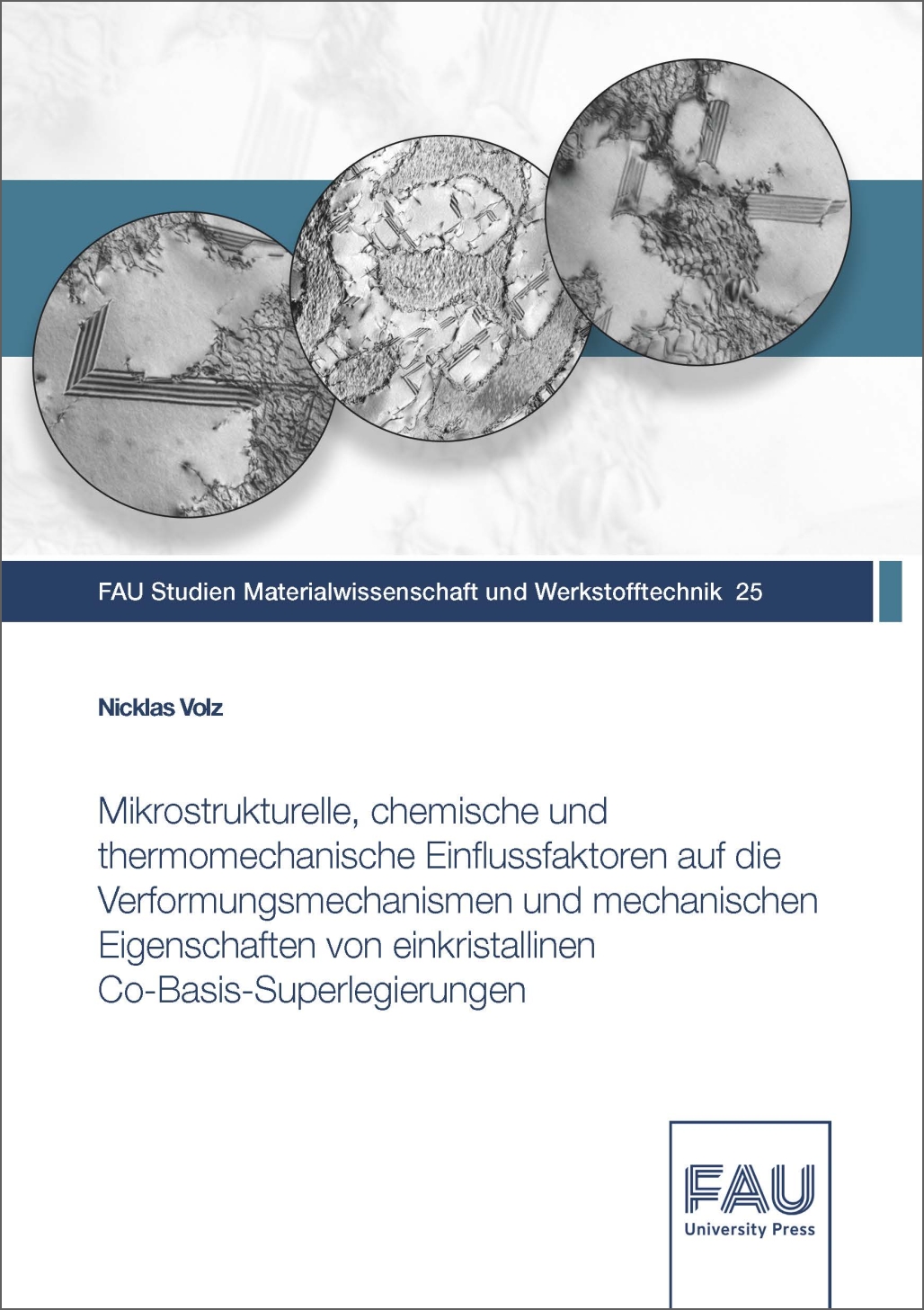Description
The scope of this work was to investigate microstructural, chemical and thermomechanical influences on the mechanical properties of single crystalline Co–based superalloys. All investigations were carried out systematically by varying one feature gradually to characterize one specific influencing factor isolated from others. The investigation of an alloy series with varying precipitate fraction but similar phase compositions revealed that the strengthening contribution of the γ' phase increases with increasing volume fraction. The compressive and compressive creep strength is improved in a way that it is comparable to conventional Ni–based superalloys, however, the stability of the two–phase microstructure is diminished. Two multinary Co–base superalloys showed that the initial γ' size has a significant influence on the creep properties, whereas the shape and arrangement of the precipitates do not play a major role. It was confirmed that the directional coarsening of the γ' phase significantly influences the double minimum creep behavior, however, also the importance of the deformation mechanisms and segregation to planar defects was shown. Therefore, the appearance of the minima could clearly be correlated to the formation of different planar defect configurations. Additionally, a preliminary study on the tension–compression asymmetry during creep was conducted over a large temperature range. It was found that the asymmetry is pronounced differently at every temperature, however, differences between tensile and compressive creep appear at all conditions. Furthermore, the influence of the base elements Co and Ni on the deformation mechanisms was investigated. An alloy series with gradually varying base element content exhibited significantly better creep properties in the Ni–rich alloys. After evaluating and discussing different strengthening contributions, the changing deformation mechanisms are mainly responsible for these observations. The characterization of deformed samples using a transmission electron microscope revealed a variety of occurring mechanisms according to the Co/Ni content, ranging from superlattice stacking faults on the Ni–rich side to extended antiphase boundaries in the Co–rich alloys. These results helped to achieve a better understanding of the plastic deformation behavior of Co-base superalloys and to develop new design criteria for future alloy development.


Reviews
There are no reviews yet.